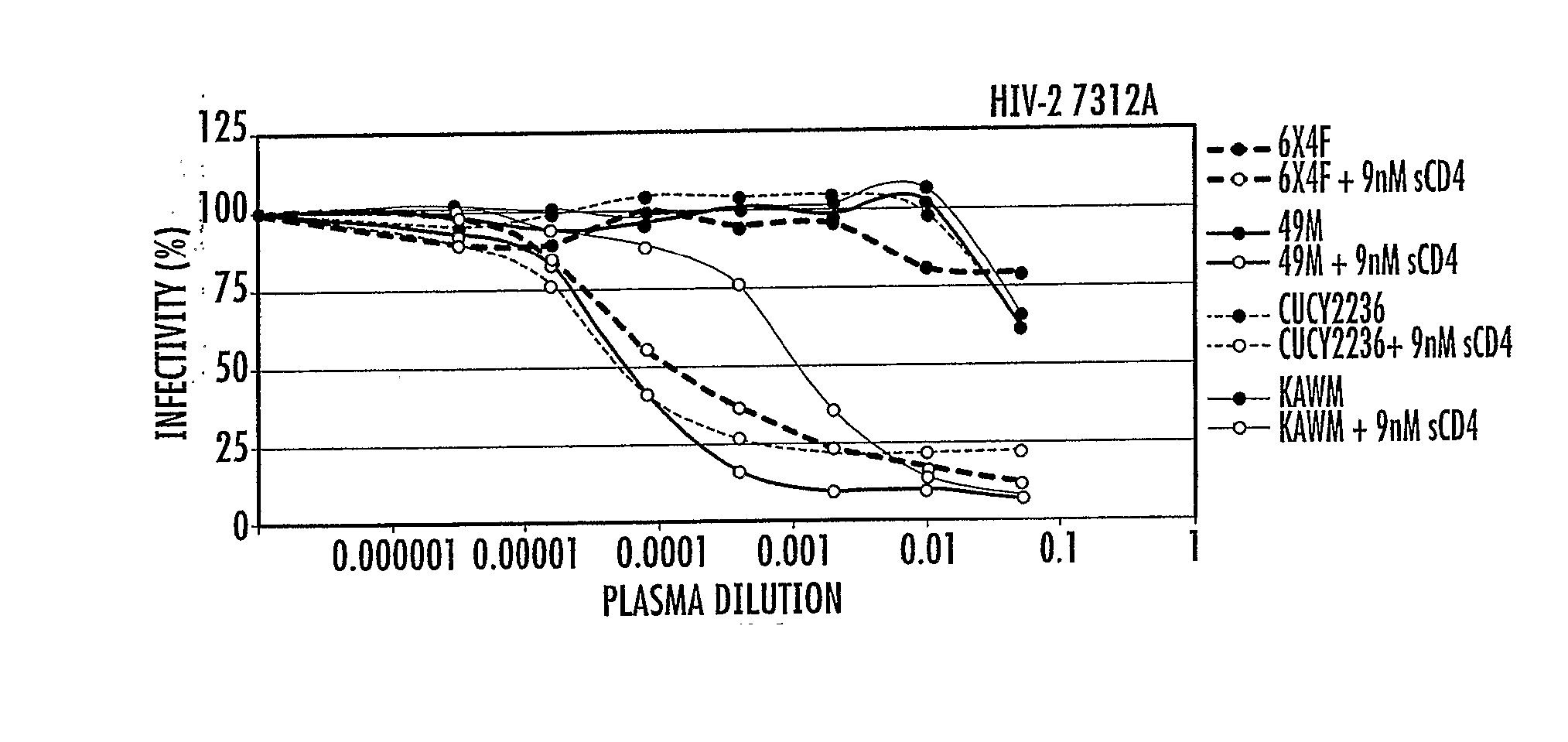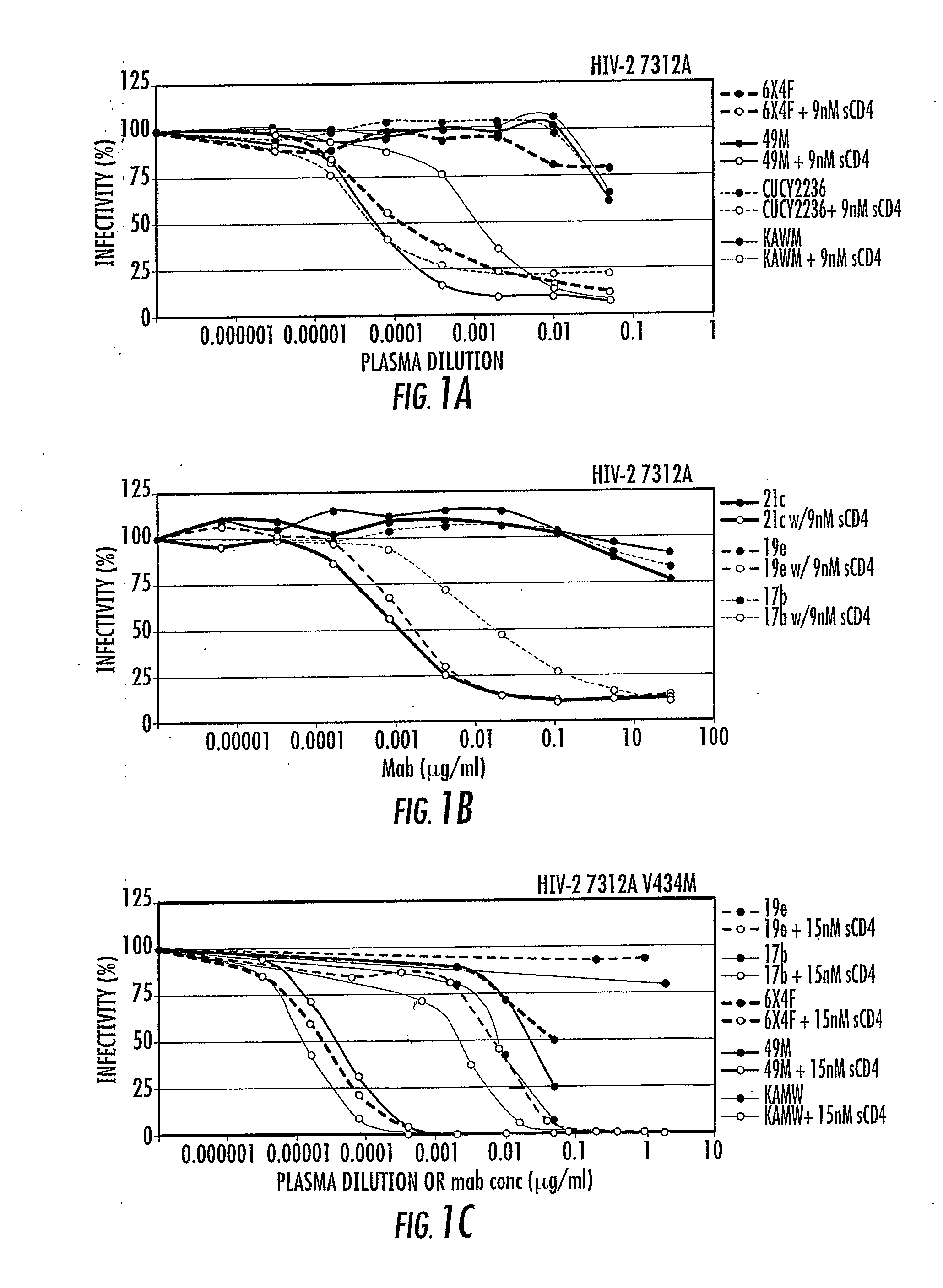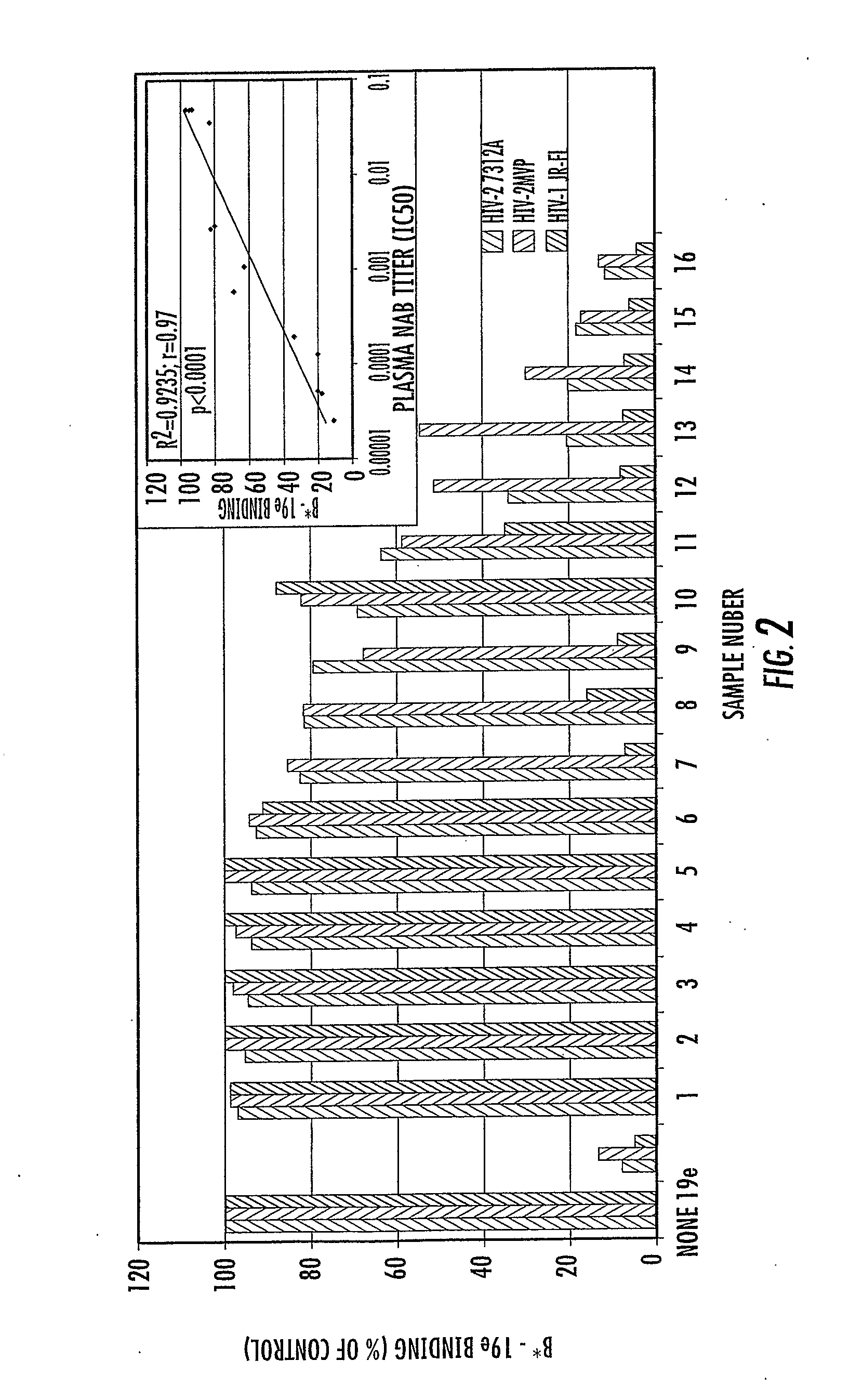Molecular Scaffolds for HIV-1 Epitopes
a technology of epitopes and scaffolds, applied in the field of retroviruses, can solve the problems of uncertain effectiveness of virus containment in vivo, incomplete understanding of the precise nature of this evolving antibody response in vivo, etc., and achieve the effect of altering the neutralization potential of cd4-induced antibody
- Summary
- Abstract
- Description
- Claims
- Application Information
AI Technical Summary
Benefits of technology
Problems solved by technology
Method used
Image
Examples
example 1
Introduction
[0112] In the present study, we sought to identify immunogenic, broadly-cross reactive epitopes on the HIV-1 envelope glycoprotein that might serve as targets of the adaptive humoral immune response in naturally-infected humans. We hypothesized that conserved requirements for co-receptor binding among diverse lineages of human or simian immunodeficiency viruses might be reflected in conserved antigenicity at the corresponding envelope surface. As a strategy, we took advantage of the wide evolutionary distance that exists between HIV-1 and HIV-2 lineages to probe for conserved neutralization epitopes. The envelope glycoproteins of HIV-1 and HIV-2 are only about 40% homologous in amino acid sequence (HIV Sequence Compendium 2002. Kuiken et al. Eds. Los Alamos National Laboratory, Los Alamos, N. Mex., LA-UR 03-3564). As a consequence, they generally exhibit weak antigenic cross-reactivity, and sera from HIV-1 infected individuals cross-neutralize HIV-2 poorly if at all (We...
example 2
[0138] With many HIV-1 vaccine candidates currently in the research pipeline, methods are needed for detecting and quantifying epitope-specific neutralizing antibody (Nab) responses in naturally-infected individuals and vaccinated subjects. HIV-1 and HIV-2 share less than 50% sequence similarity in envelope and they generally exhibit little cross-neutralization. We postulated that HIV-1 Nab epitopes could be identified in, or molecularly engineered into, functional HIV-2 env glycoproteins.
[0139] Sequence alignments of HIV-1 and HIV-2 viruses were examined to identify conserved regions in the membrane proximal external region (MPER) of gp41 and site-directed mutagenesis was used to change selected amino acids in this region of HIV-2 to resemble HIV-1. HIV-2 virions bearing envelopes with 4E10 core epitope amino acids, or control viruses containing wild-type HIV-1 or HIV-2 env, were analyzed for neutralization susceptibility to a panel of HIV-1 and HIV-2 monoclonal antibodies (Mab) o...
PUM
| Property | Measurement | Unit |
|---|---|---|
| Fraction | aaaaa | aaaaa |
| Molar density | aaaaa | aaaaa |
| Density | aaaaa | aaaaa |
Abstract
Description
Claims
Application Information
 Login to View More
Login to View More - R&D
- Intellectual Property
- Life Sciences
- Materials
- Tech Scout
- Unparalleled Data Quality
- Higher Quality Content
- 60% Fewer Hallucinations
Browse by: Latest US Patents, China's latest patents, Technical Efficacy Thesaurus, Application Domain, Technology Topic, Popular Technical Reports.
© 2025 PatSnap. All rights reserved.Legal|Privacy policy|Modern Slavery Act Transparency Statement|Sitemap|About US| Contact US: help@patsnap.com



